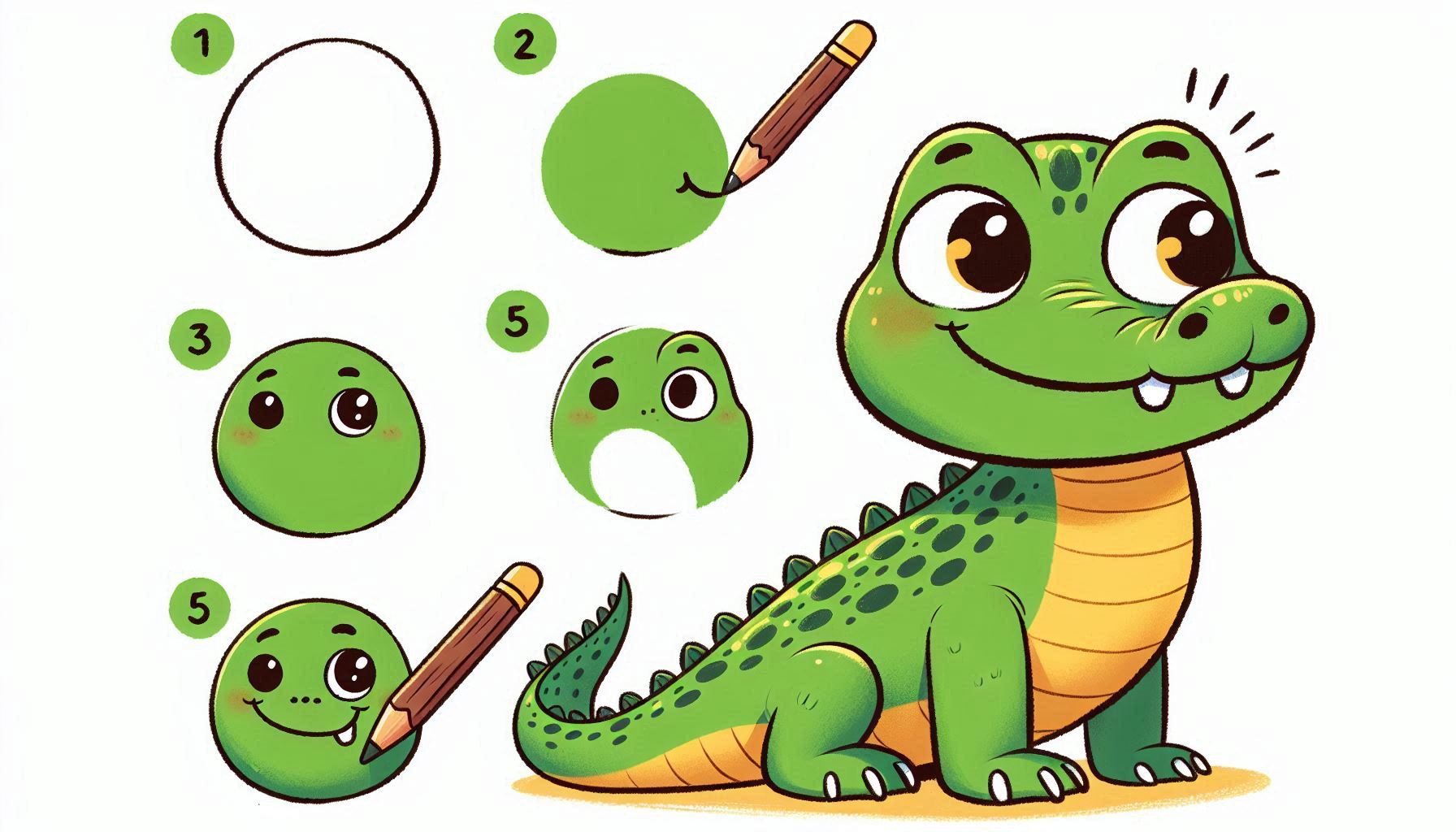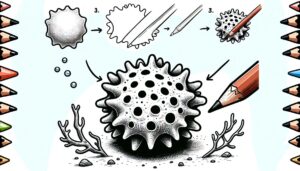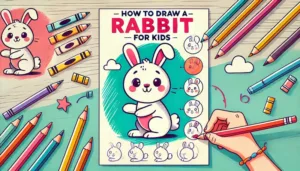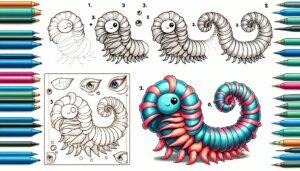Creating a depiction of an alligator can be a thrilling opportunity to delve into the characteristics of these ancient and awe-inspiring reptiles. Alligators are famous for their strong jaws, durable scales, and unique body structure. In this guide, we’ll walk you through the process of drawing an alligator, paying close attention to its distinctive characteristics and incorporating creative elements. Let’s embark on this imaginative journey!
The Fascinating Anatomy of Alligators
Alligators possess a variety of unique characteristics, such as their lengthy and robust tails, resilient skin adorned with scales, and a wide, tooth-filled snout. Their body is well-suited for their life in the water, with strong muscles and a sturdy build. By familiarizing yourself with these features, you’ll be able to produce drawings that are both precise and intricate.
The Joy of Capturing Scales and Texture
When creating a drawing of an alligator, it’s important to capture the unique texture and roughness of its skin. The scales and the tough, bumpy texture bring depth and character to your drawing. This challenge will help you improve your skills in working with textures and creating a lifelike representation of this captivating reptile.
Discovering the Fascinating World of Alligators Through Art Alligators possess captivating visual features and exhibit intriguing adaptations and behaviors. Exploring the unique characteristics and habitats of these little ones through drawing can be a wonderful opportunity. This theme highlights the educational aspect of art and the chance to explore new aspects of alligator life through creative expression.
First, start by drawing the basic shape of the alligator.
Begin by sketching the fundamental form of the alligator’s body. Start by drawing a long, elongated oval or rectangle for the body. Alligators possess a sleek, elongated form. Create a smaller oval or circle for the head at one end of the body.
Step 2: Incorporate the Head and Facial Features
Place the head at the front of the body. The head has a broad and slightly triangular shape, with a snout that is rounded. Place two small, oval eyes on either side of the head. Alligators have a broad, toothy mouth, so you should draw a wide, curved line to represent it. Consider adding a row of sharp teeth along the upper jaw.
Step 3: Now let’s move on to drawing the legs and feet.
Alligators possess short, sturdy legs with webbed feet. Sketch the front legs as robust, gently arched forms that protrude from the body’s sides. Complete the look by adding small, rounded shapes at the end of each leg. Make the hind legs slightly larger and position them further back. The hind legs are often stronger and can be depicted with a bit more intricacy.
Step 4: Now let’s move on to drawing the tail.
Alligators possess a lengthy and robust tail that gradually narrows as it reaches its extremity. Begin drawing the tail from the back of the body, extending it outward and gradually narrowing it to a sharp point. The tail should have a thick base and taper off as it extends. Give it a gentle curve to create a more natural and flexible look.
Step 5: Enhance the surface and create a pattern
To capture the unique texture of the alligator’s skin, create small, overlapping shapes and patterns on its body and tail. Alligators possess rough, uneven scales that offer a unique texture. Include these details to enhance the realism and add more interest to your drawing. Employ small, curved lines to indicate the texture of the scales and the delicate variations in pattern.
Step 6: Perfecting the Form
Opt for a darker writing utensil to carefully trace over your initial drawing and enhance the form of the alligator. Refine the contours of the body, head, legs, and tail. Make sure the body segments, legs, and tail are clearly defined and in proper proportion. Remove any unnecessary guidelines or overlapping lines to tidy up your drawing.
Step 7: Enhance with Shading and Color
Elevate your drawing by incorporating shading techniques that bring out the alligator’s texture and depth. Utilize deeper hues to generate shadows beneath the legs, surrounding the creases of the skin, and along the tail. If you’re coloring your drawing, consider using shades that reflect the natural colors of alligators, such as green, brown, or gray. Use lighter shades to highlight certain areas and darker colors to add depth and dimension, resulting in a more realistic and detailed look.
Topic 1: The Fascinating Physiology of Alligators
Exploring the anatomy of an alligator through drawing reveals fascinating features such as its formidable jaws, resilient skin, and strong, sinewy tail. Understanding these features enables you to craft a comprehensive and precise portrayal. Recognizing the allure of alligator anatomy can improve both your artistic abilities and your understanding of these captivating reptiles.
Theme 2: Exploring the Joy of Capturing Scales and Texture
The rough and durable scales of an alligator provide an enjoyable and fulfilling challenge for artists. Mastering these details demands ingenuity and expertise, making it an excellent opportunity to explore textures and produce lifelike artwork. Embrace the joy of creating a lifelike representation of the alligator’s scales and rough texture.
Theme 3: Discovering the Fascinating World of Alligators Through Art
With their fascinating appearance and unique adaptations, alligators provide an opportunity to delve into captivating aspects of reptile life. Exploring different textures and colors can make your artwork visually engaging and educational. This theme celebrates the excitement of exploring different aspects of alligator life through art.
In summary
Drawing an alligator is a fun and captivating experience that lets you capture the distinct features and textures of this formidable reptile. By following the steps in this guide and paying attention to its anatomy, texture, and colors, you can create a detailed and captivating alligator drawing. Embrace the joy of the artistic process and allow your creativity to shine as you bring this amazing creature to life on paper!
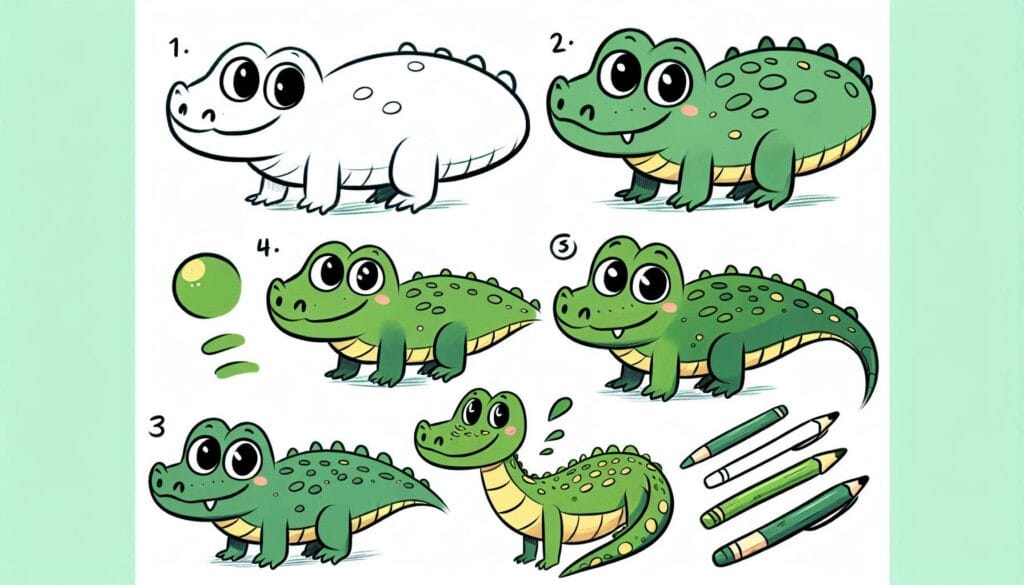
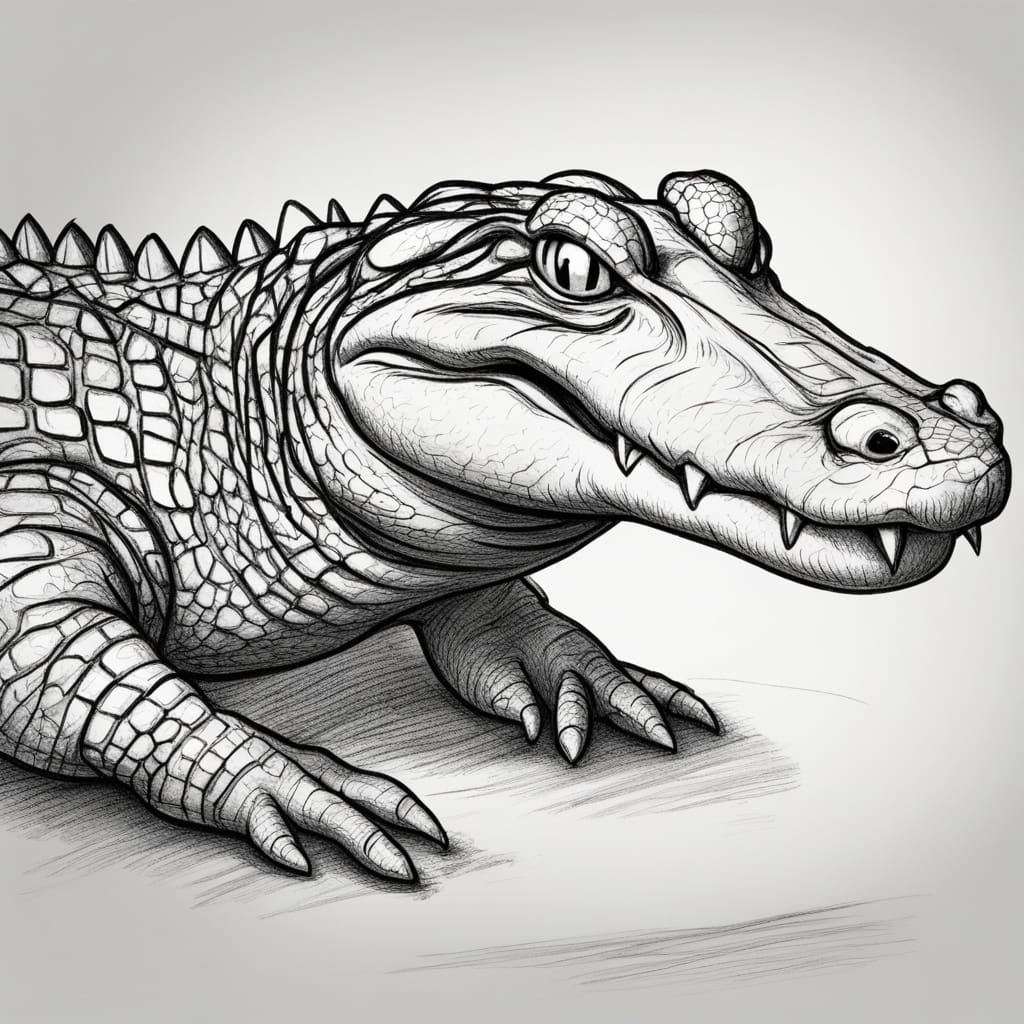
Check out this super fun and simple guide to learn how to draw a turtle with easy step-by-step instructions! This fun tutorial provides easy steps, allowing young creators to dive into their imagination while discovering the wonders of these amazing reptiles!

